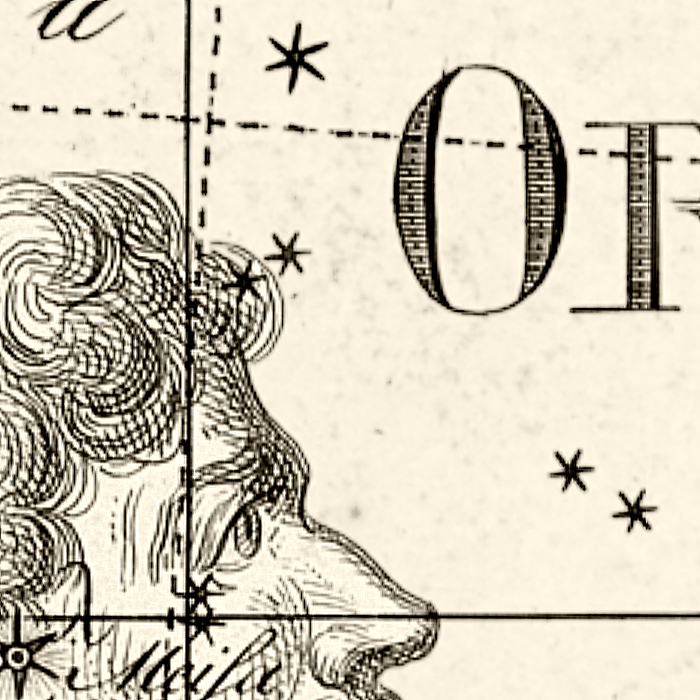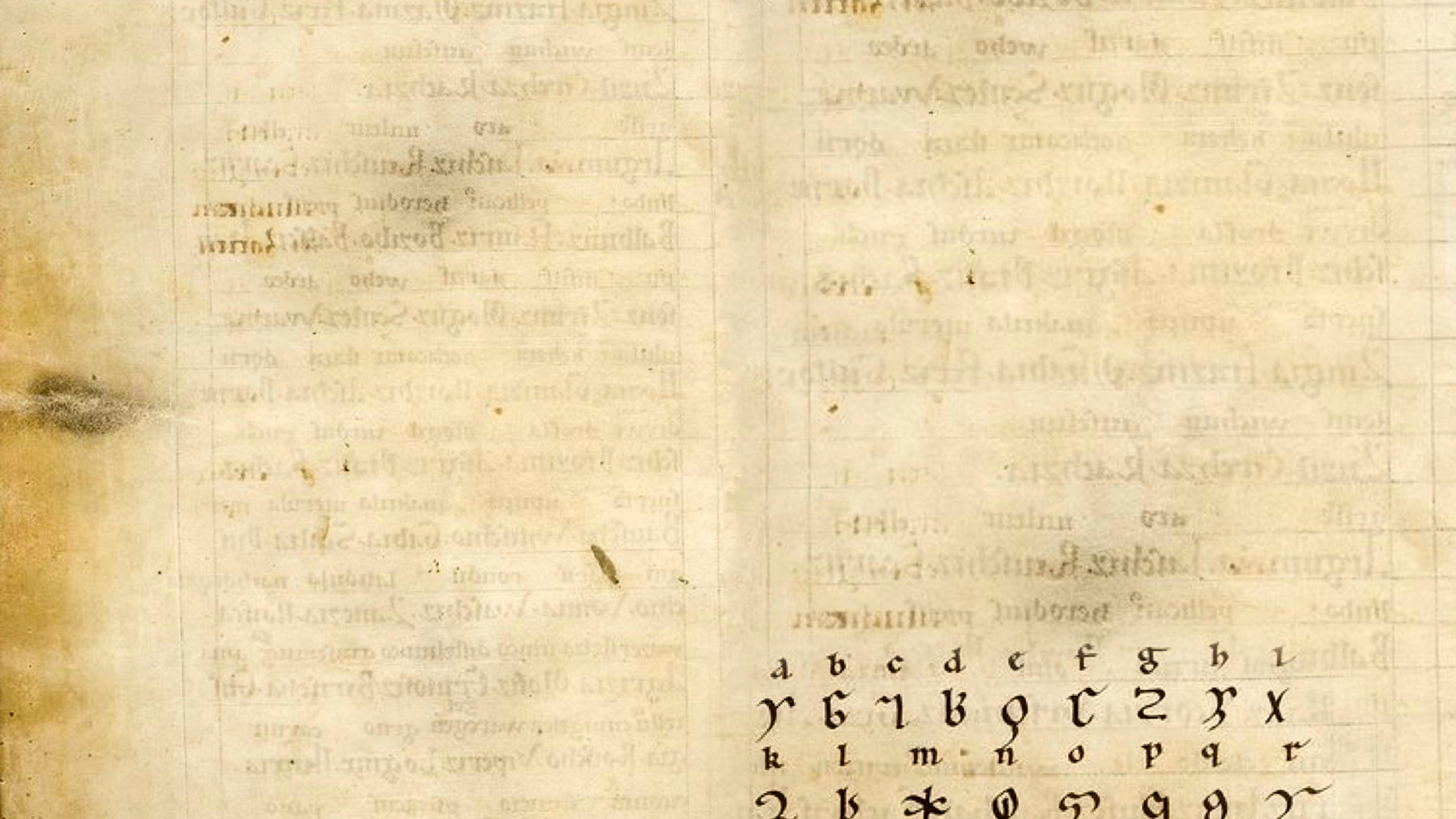 The Rune Poem says Tiw is one of the signs, a tacn, a token. This is the first clue in the riddle. A sign is a clue to something as well; signs symbolize in shorthand something else. A letter in an alphabet is a sign that means a sound and sometimes a whole word. The color of a light hanging over a road is a sign standing as evidence of broader meanings, covenants of mutual trust, expectations of behavior. And signs can be signs for signs, like these: 💰, 🐮, 🌹🌵, 😉, 🛣, 🔦, 🎁, 🤑, ⛈, 💔🆘👂, ❄️, 🌱, 🌲🪦, 🎮, 🧬, 🌅, 🪧⭐⚖, 🌳🔮, 🐴, 🫂🪦, 🌊, 🛒👋, 🏠, ☀, 🌳🌰⛵, 🌳😇👊, 🏹, 🦫, 🪦. These are signs in nested levels of scale. It’s signs all the way down.
The Rune Poem says Tiw is one of the signs, a tacn, a token. This is the first clue in the riddle. A sign is a clue to something as well; signs symbolize in shorthand something else. A letter in an alphabet is a sign that means a sound and sometimes a whole word. The color of a light hanging over a road is a sign standing as evidence of broader meanings, covenants of mutual trust, expectations of behavior. And signs can be signs for signs, like these: 💰, 🐮, 🌹🌵, 😉, 🛣, 🔦, 🎁, 🤑, ⛈, 💔🆘👂, ❄️, 🌱, 🌲🪦, 🎮, 🧬, 🌅, 🪧⭐⚖, 🌳🔮, 🐴, 🫂🪦, 🌊, 🛒👋, 🏠, ☀, 🌳🌰⛵, 🌳😇👊, 🏹, 🦫, 🪦. These are signs in nested levels of scale. It’s signs all the way down.
What was a sign to somebody who thought in Old English? Same as it is now: a symbol for something, an astrological collection of stars, evidence of a former reality, proof of a shared understanding or covenant of trust that will take us far into the future, a portent of the future itself imparted by a deity as a marvel, a miracle, if we would listen to omens beforehand. There are lots of kinds of signs. Tiw is one of the signs.
We have other clues to think about, the stanza says Tiw is a sign located in the night sky, forever, always: a constant. Is Tiw a star? A constellation? A planet? Perhaps Tiw is not a planet, they can come and go. We can rule out the big dipper as that is a cart chasing after Ing. Princes trust it, maybe Tiw is something useful for navigation like the pole star? The pole star stays put though, and the Rune Poem tells us that Tiw is on færylde, on a journey, perhaps an ylde, an old journey, so it might be Orion, a constellation that no matter where you are in the world, rises in the east and sets in the west and always has: The sight of Orion hunting that great aurochs Taurus is an indispensable tool for navigation. You can see it well too, as it contains some of the brightest stars in the night sky, and you can trust it, it holds a trywa, a covenant, an assurance of good faith that your direction of travel at night may be determined with accuracy. Orion will not deceive you. Trust you will not be lost.
What else was Tiw to the rune carvers? A constellation is not just a group of stars, it is a sign of something else, with meaning, a story, perhaps a whole mythology. If Tiw was a constellation, what was the picture in the sky people saw when they looked at it? What else do we know about Tiw? Besides one stanza of the Rune Poem, it is not much. We know Tiw has a day: Tuesday. Other days are named after important deities, Tiw must have been an important deity too. Who? Tuesday is also called Martes, Mars’ day. When Tacitus visited Germania in the first century, he says the Germanic people revere Mercury above all others, this is clearly Odin, and sacrifice to Hercules and Mars as well. Who were Hercules and Mars? It’s not clear. People have guessed Hercules is Thor, or possibly Mann. Is Mars Tiw? Mars is the Roman god of war; the rune carvers incised their battle gear with Tiw’s rune, an invocation to the deity who will help them in combat the most, so it makes sense to think of Tiw as a battle god like Mars. What written sources do we have for this? None. This is it for evidence of Tiw, just a stanza in the Rune Poem, a shared day of the week with Mars, and runes carved onto weapons.
But hold up, look several hundred years down the road at what Snorri Sturluson is doing with the gods: he is telling their stories. It’s hard to see from here I know, we are talking about deities written down at the turn of the thirteenth century, seven hundred years plus from when the Rune Poem was written, let alone let alone the distance from when they were first thought of. But look at what Snorri has to say. Yes he’s making all the old stories a bit more sexy for his audience, a teenaged king wants flash and excitement. And narrative: he wants a complete story with major characters and a supporting cast and there he is! Tiw, now called Tyr, shows up as a minor character, sometimes a sidekick at best, it’s still not much, but there he is!
Here’s Tyr’s biggest appearance in Snorri’s work, found in Gylfaninning, the first part of the Prose Eddas: The gods are concerned because their downfall is coming. Loki has had three monster children with a giantess called Angrboða, meaning somebody who forebodes grief, so that’s a relationship choice bound for unpleasant consequences. All three of their offspring will have a destructive part to play during Ragnarok, the doom of the gods. Being gods they can see their destruction coming, so they banish two of the monster children: Jormungand, a serpent, is sent to chew at the roots of the world tree, a death goddess named Hel they exile into the underworld, leaving a fen dwelling wolf named Fenrir to deal with. Fenrir they decide to raise from a puppy, which doesn’t always work when managing the behavior of a wild animal. A wolf is still a wolf even if you treat it like a pet dog. Tyr takes charge of feeding Fenrir, and does his job well because the puppy grows very big very quickly. Massive. So massive the gods decide they will have to chain Fenrir up, you can’t let a vicious dog like that loose to wander just anywhere, but how to do that without at least minimal cooperation from Fenrir? Fenrir doesn’t trust them the slightest bit. They’ll have to trick him into chains. they accomplish this by calling it feats of strength, here boy, can you break this chain? How about this one? They chain him, he breaks it, the gods applaud! Good boy! Well done! Have a treat! Like you do when puppy training. Positive reinforcement on repeat. Finally they ask the dwarves to craft an unbreakable chain from the sound of a cat’s footstep, the beard of a woman, the roots of a rock, the sinews of a bear, the breath of a fish, and the spittle of a bird. Put these mostly impossible things together and you can fashion a highly magical item. Fenrir is suspicious. This new chain is light and soft and different. He agrees to be bound by it, but as a sign of good faith, so everybody can trust everybody else, one of the gods will have put a hand in his mouth: if you aren’t planning to trick me, you won’t mind me holding your hand between my teeth, now would you? If I can trust you, I have no reason to bite you, now do I? This is Fenrir’s thinking, but nobody wants to step up, nobody but Tyr. Fenrir can trust Tyr. Tyr never deceives. Never. In goes Tyr’s hand, on goes the chain which Fenrir discovers he cannot break, and off goes the hand that feeds him. Just like that. One bite.
And there’s nothing more said about Tyr, not even his reaction to losing his hand. He is still associated with war by the time Snorri Sturluson and the writers of the Poetic Eddas get their hands on him. Loki tells Tyr in Lokasenna, one of the Poetic Eddas, to be quiet in a negotiation because he can never foster friendship between people. In Sigrdrífumál, the hero Sigurd is told to carve winning runes on his sword and call on Tyr twice before battle. There are other war gods, though, Thor and Odin. Thor presides over brute force, the physicality of combat, and Odin over strategy and magic. What is Tyr’s job in war? Justice. Tyr makes sure the outcome is just. War was often fought as a method of determining a legal outcome. Tyr’s influence would ensure that the winner ought to win, that the victory is seen as just, you can trust it, like a duel of honor but on a larger scale. A proper and just outcome in war is how to achieve tir, the Old English word for glory which feels so satisfying when it comes from a well earned battle victory. This is why Tyr loses his hand: his sacrifice ensures that bamboozling Fenrir into chains is in some way a proper and just contract, a trywa, a covenant of trust legitimized by a fair exchange: if you deceive me, I get to bite off your hand. And who better to soothe a vicious wolf into feeling trusting than the god who never deceives. Tyr would rather lose a hand than be untrustworthy. You can trust him still. Nightly he fulfills his covenant with us to rise in the east and set in the west. You can count on him, steer by him. He will not lead you astray. He will never deceive you.



